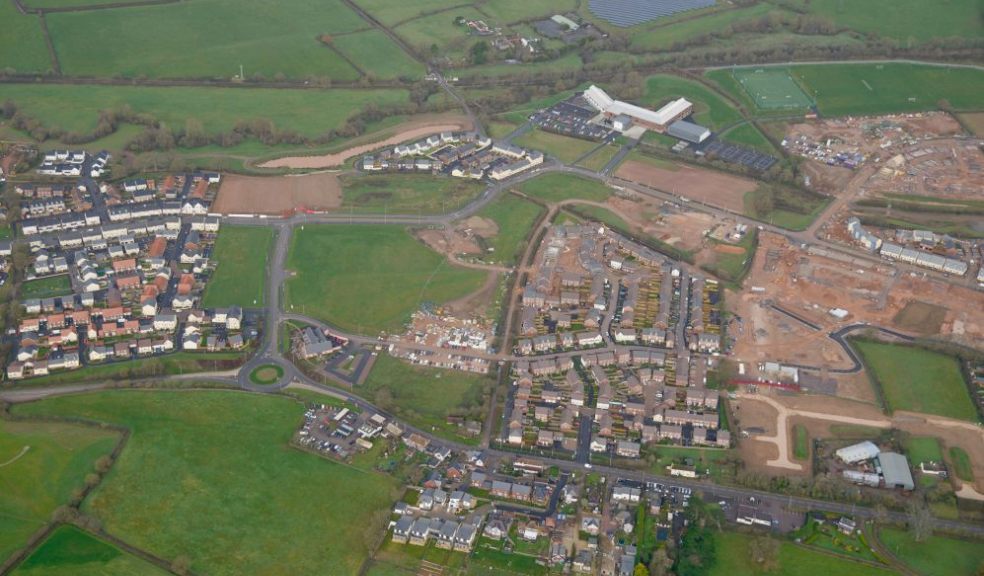
Councils call for High Streets Fund for new towns
Council leaders have jointly called on government to extend funding to create and improve town centres in new towns.
East Devon District Council and Cranbrook Town Council Leaders have written to the Parliamentary Under Secretary of State at the Ministry of Housing, Communities and Local Government, Jake Berry MP, to request eligibility criteria for the Fund be changed to include new towns.
The £675 million Future High Streets Fund was launched in December 2018 to help modernise high streets and town centres. The fund was launched following recommendations from retail expert Sir John Timpson. It is designed to help local authorities adapt to the changing needs of high streets.
Councillor Ian Thomas, Leader of East Devon District Council, said: “As the newest town in Devon, Cranbrook has been leading the way in the creation of new towns as a blueprint for others to follow. Cranbrook is a shining example, providing great facilities for its residents at the same time as new homes have been built, such as a train station, two schools, neighbourhood shops and a community building.
“Residents have been waiting patiently for a town centre, to act as the heart of the town. The Future High Streets Fund could help to kick start an exciting town centre for Cranbrook, if the qualifying criteria were changed to include new towns.”
Councillor Kevin Blakey, Chairman of Cranbrook Town Council, said: “Cranbrook Town Council was very disappointed to learn that Cranbrook did not meet the eligibility criteria for the latest round of the Future High Street Fund. Future rounds of the Fund need to consider the benefits of supporting new towns like Cranbrook with this funding because these offer the opportunity to take a large unused space and turn it into a blueprint for a sustainable and vibrant town centre for the future.”
The letter reads:
From when the support for Future High Streets was announced in the 2018 Autumn Statement, there was anticipated hope that this fund could support the development of a town centre within the new town of Cranbrook, Devon.
Occupations of new homes in Cranbrook commenced in September 2012. Now, in 2019, there are 1,900 homes occupied. Through the development of the town key infrastructure has been delivered, including the first primary school in 2012 when there were less than 30 occupations; a community centre in October 2013; the railway station in December 2015, but no town centre despite the land now being available and marketed. In many ways Cranbrook is experiencing the same issues as other high streets, but in stark conditions. Put simply, there are no vacant units as no units have been constructed.
It is recognised that the guidance set out by central government for the Fund was written to take account of the decline in retail activity in many of the nation’s long-established towns and cities and it is likely that Cranbrook’s unique circumstances as a newly-built town would not have been in the minds of its authors.
Looking at the eligibility rules from the Ministry of Housing, Communities and Local
Government, they expect, among other things, the identified need for investment in
physical infrastructure, acquisition of land to support new housing and workspaces, and the adaptation of the high street in response to changing technology. Essentially, they are looking for local authorities to identify failing town centres and to demonstrate a clear vision of what a town centre needs to be to succeed – Cranbrook could achieve this.
Unfortunately however, it has not been possible to develop an Expression of Interest for Cranbrook. It is not possible to provide data on the challenges being experienced when the town has been unable to develop a town centre. There are no records of numbers of vacant units, diversity of uses or footfall trends. But there is a real opportunity in new towns like Cranbrook in helping to inform Government of what a modern town centre looks like in the 21st century. It should be in the vanguard for setting the standard both locally and nationally. We can show how to thrive alongside e-commerce rather than complaining about it and failing to live with it.
Future rounds of the Future High Streets Fund need to consider the benefits of supporting new towns within this funding. New towns, like Cranbrook, offer the opportunity to take a large unused space and turn it into a blueprint for a sustainable and vibrant town centre which will serve as an economic and social focal point for the town itself and the surrounding towns, villages and hamlets. They also provide an opportunity to test ideas to support the high street without needing to assemble land through compulsive purchase orders or demolish existing buildings.
We hope that you can review the Future High Streets Fund guidance and provide new towns an opportunity to bid for support from future rounds of the fund.














